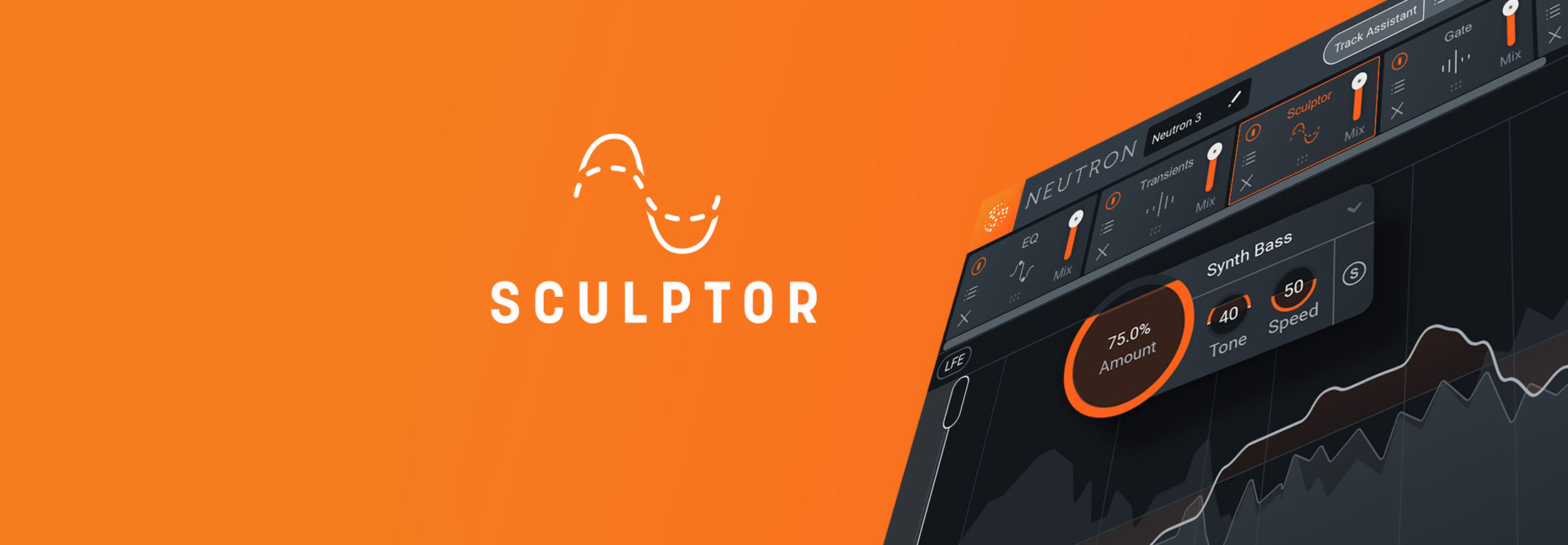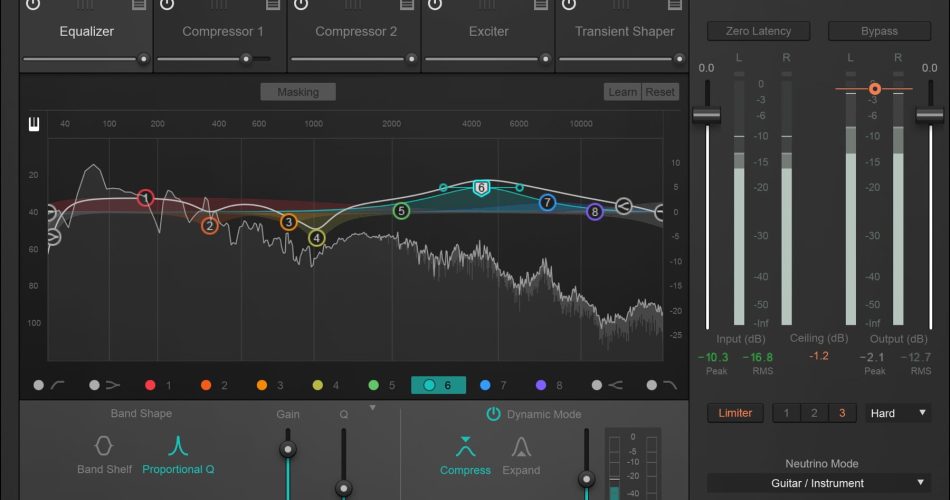

So this will be electric 1, and let’s run Track Assistant on this. At this point in the song, we’ve got a heavy kind of riffing electric guitar. So let’s come over here and check out some stuff on the electric guitar. The snare probably is going to have a different EQ compared to the kick drum,” however, you know, if you’re looking for it to give you all of these different suggestions and have these unique things, it might not be what you’re going to anticipate. So I’ll give them credit and say, “You know what, you’ve got - it’s a smart analysis. Right? Compressor, we’ve got five-to-one, knee of 30, attack, basically the same on these things, right? So that’s kind of the stock, or the template that it’s working off of. So for instance, it kind of boosts down here in the low frequency near the fundamental of the kick drum, and then for the snare, it boosts a little bit higher, closer to the fundamental there, then it’s got a couple of scoop kind of EQs just to pull some maybe ringing out of the lower mid-range, and then up here at the top, maybe around 3kHz, it’s going to have a little bit of a boost. It kind of starts from a template, and then fits that template to your incoming signal. Now, I will say that it suggested things that are slightly different from each other, but the thing that I’ve noticed, at least initially working with the plugin, is you’re getting similar kinds of results. So over here on my right is my snare, and the left is the kick. Let’s compare our results, then, and what we have between these two processors. So let’s hit Track Assistant and have it analyze my snare and suggest how it should be processed. Let’s see what would happen if we inserted this one on our snare. So let’s go over here and check out the snare. It came up with the drums and percussion, and you’ve got the equalizer, you’ve got an exciter, you’ve got a compressor, and I guess it decided five-to-one ratio with some knee, and attack and release settings. So you can see, kind of running it behind the scenes, the equalizer was kind of moving around and finding settings that it thinks would be a good idea to use here. It’ll analyze it and suggest how it should be processed.

I’ll go ahead and click on Track Assistant, and it’s going to wait for me to play in sound. It’s an analysis that’s going to take the incoming signal, and figure out and suggest to you how it should be processed.

So I’m going to go in here and label this instance of it as the kick, and then it has this cool button here called Track Assistant. The idea is this plugin, in theory, could be inserted on every single one of your tracks, and it should be able to - it’s kind of an all purpose mixing tool, so if you want to use it on drums, guitars, whatever.

Let’s go in here and start using this plugin. I haven’t really set anything up on this particular session file, but you’ll hear how it sounds, and then we’ll get into processing it with Neutron. So I’m going to show you this session here, and then take you through a few things with Neutron, but if you want to find out more about it, definitely head over to to check it out.
#HOW TO USE IZOTOPE NEUTRON FULL#
I do some stuff over there too, and in fact, this month for Mix Practice, what I did is an entire full length tutorial, start to finish, mixing this multitrack session, just using Neutron to see what kind of results I could get using some of these features to allow me to dig a little bit deeper into the plugin, and see what I thought about it. I’m going to be looking at the plugin on this multitrack session. We’re going to look at, now, how smart are these smart mixing tools? Are they going to put an audio engineer out of the job yet? Do we have to be worried as mixing engineers whether we’re going to be replaced by a computer? Equalized, compressed, and all that kind of stuff. We’re going to take a closer look at those things here, specifically, what I’ll call some of the smart processing, or smart mixing analysis tools that are built into it, with the idea that the plugin is able to analyze your tracks and figure out how they should be processed. This plugin has a lot of cool, unique features built into it that you don’t really find in other plugins. This is a follow up video to a tutorial that I made previously looking at the Neutron plugin from iZotope.


 0 kommentar(er)
0 kommentar(er)
